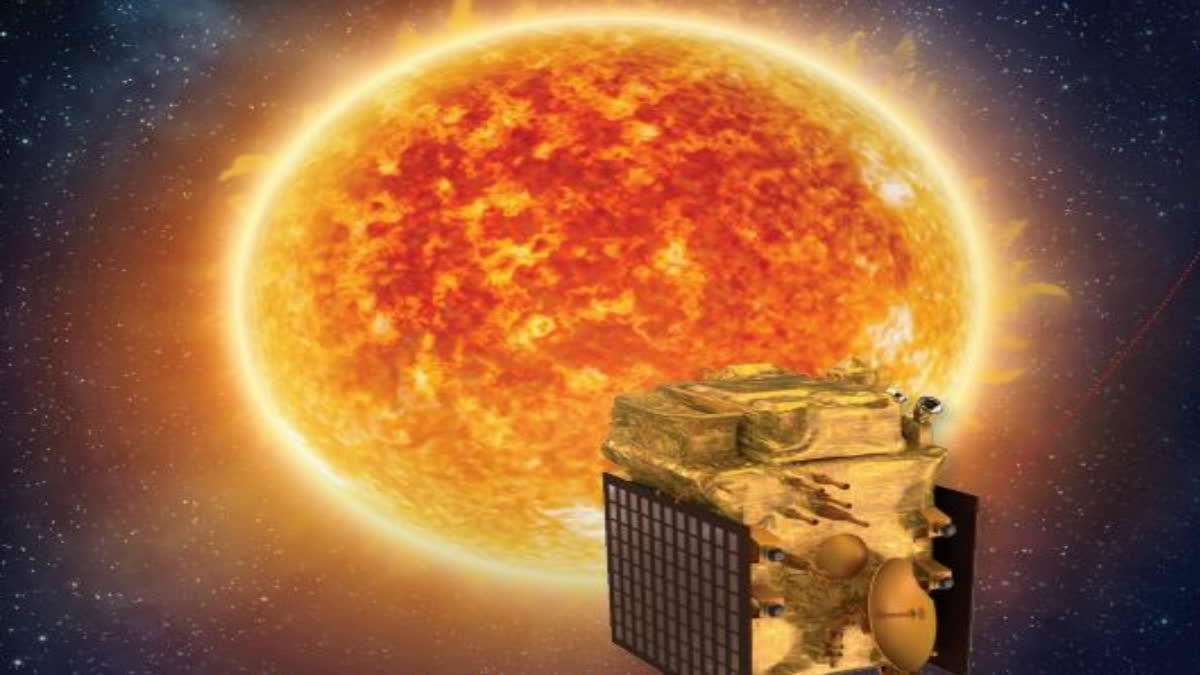Hyderabad: Basking in the glory of Chandrayaan-3 success, a buoyed ISRO is set to launch the Aditya-L1 spacecraft to study the Sun on September 2 at 11.50 am from the Sriharikota spaceport.
Aditya-L1 spacecraft is designed to provide remote observations of the solar corona and in-situ observations of the solar wind at L1 (Sun-Earth Lagrangian point), which is about 1.5 million kilometres from the Earth. It will be the first dedicated Indian space mission for observations of the Sun to be launched by the Bengaluru-headquartered space agency.
The Sun is the nearest star and the largest object in the solar system. The estimated age of the Sun is about 4.5 billion years. It is a hot glowing ball of hydrogen and helium gases. The distance between the Sun and the Earth is about 150 million kilometres. Sun is the source of energy for our solar system. Without solar energy, life on earth cannot exist.
The gravity of the Sun holds all the objects of the solar system together. At the central region of the Sun, known as the ‘core’, the temperature can reach as high as 15 million degrees Celsius. At this temperature, a process called nuclear fusion takes place in the core which powers the sun. The visible surface of the sun known as the photosphere is relatively cool and has a temperature of about 5,500°C (not so cool after all!).
Why is ISRO studying the Sun
As the proximity offers an unparalleled opportunity to examine the Sun in detail, and will also help in comprehending stars across the Milky Way and distant galaxies.
The Sun is a dynamic entity extending beyond its visible aspect, which exhibits eruptive events resulting into the release of immense energy within the solar system. Potential impacts of these solar eruptions on Earth's space environment underscore the need for monitoring and prediction.
Space Weather: The Sun's Influence
The Sun is a major factor in continually shaping the Earth's environment through radiation, particles, and magnetic fields. The solar wind, a stream of high-energy protons, floods the solar system, alongside the Sun's magnetic field.
Also, disruptive solar events, like Coronal Mass Ejections (CMEs), modify the space environment near planets, potentially affecting technology and functioning of space assets. Thus, understanding space weather is crucial as our reliance on space-based technology grows.
About Aditya-L1
Aditya L1 is the first space-based observatory class Indian solar mission to study the Sun. It is poised to orbit around Lagrangian point 1 (L1), offering a unique vantage point 1.5 million km from Earth. Positioned there, Aditya-L1 will witness the Sun's activities without interruptions.
Aditya L-1 is equipped with seven payloads, including electromagnetic and particle detectors, it will explore the photosphere, chromosphere, and corona. The payloads promise insights into coronal heating, Coronal Mass Ejections (CMEs), and space weather dynamics.
Mission Objectives
- Understanding the Coronal Heating and Solar Wind Acceleration.
- Understanding initiation of Coronal Mass Ejection (CME), flares and near-earth space weather.
- To understand the coupling and dynamics of the solar atmosphere.
- To understand solar wind distribution and temperature anisotropy.
Unique Aspects of Aditya-L1
- A novel spatially resolved solar disk view in the near-UV range.
- Exploration of CME dynamics in proximity to the solar disk, an area scarcely studied.
- Intelligent onboard systems for CME and solar flare detection, optimizing observations and data.
- Solar wind's directional and energy anisotropy studied through multi-directional observations.
Aditya-L1 science payloads
The Aditya-L1 comprises of seven scientific payloads, each developed by different Indian laboratories. The Visible Emission Line Coronagraph (VELC) examines the corona and CME dynamics. The Solar Ultra-violet Imaging Telescope (SUIT) observes the Solar Photosphere and Chromosphere, measuring UV irradiance variations. Aditya Solar wind Particle EXperiment (ASPEX) and Plasma Analyser Package for Aditya (PAPA) study solar wind and energetic ions.
Solar Low Energy X-ray Spectrometer (SoLEXS) and High Energy L1 Orbiting X-ray Spectrometer (HEL1OS) focus on X-ray flares. The Magnetometer payload measures interplanetary magnetic fields at L1.
Aditya-L1's Trajectory to L1
Aditya-L1's journey will begin with the launch from ISRO PSLV rocket at Sathish Dhawan Space Centre SHAR. Initially placed in low Earth orbit, the spacecraft's orbit will transform, propelling it toward Lagrange point L1.
Exiting Earth's gravitational influence, the cruise phase will usher in a large halo orbit around L1. The mission's entire travel time from launch to L1 is estimated at around four months.
Is Aditya-L1 a complete mission to study the Sun?
The obvious answer is a ‘NO’ which is not only true for Aditya-L1 but in general for any space mission. The reason is that due to the limited mass, power and volume of the spacecraft that carries the scientific payloads in space, only a limited set of instruments with limited capacity can be sent onboard the spacecraft.
- While Aditya-L1 is groundbreaking, its constraints as a space mission limit its capacity to capture all aspects of solar phenomena.
- Multi-directional solar events remain challenging to study exclusively with Aditya-L1.
- Another Lagrange point, L5, holds potential for Earth-directed CME study.
- Solar polar dynamics and magnetic fields, crucial to understanding solar cycles, remain enigmatic.
Also read: After conquering Moon, ISRO eyes Sun; launch of Aditya-L1 solar mission set for Sept 2



